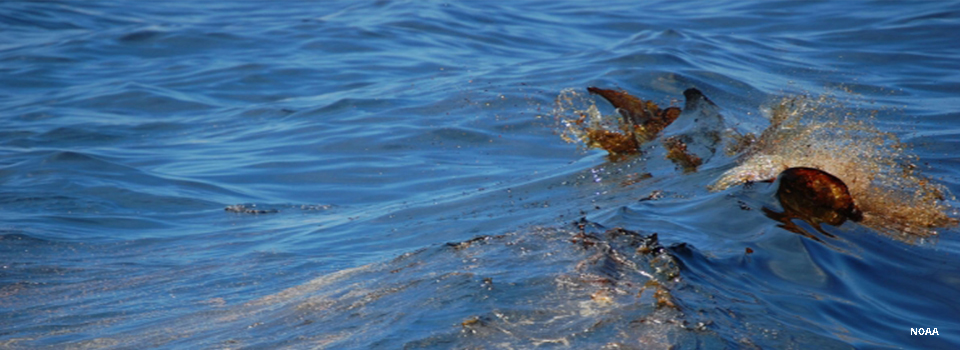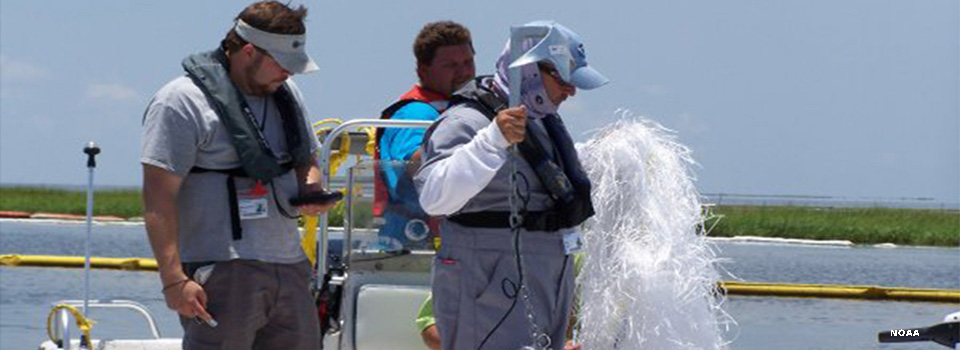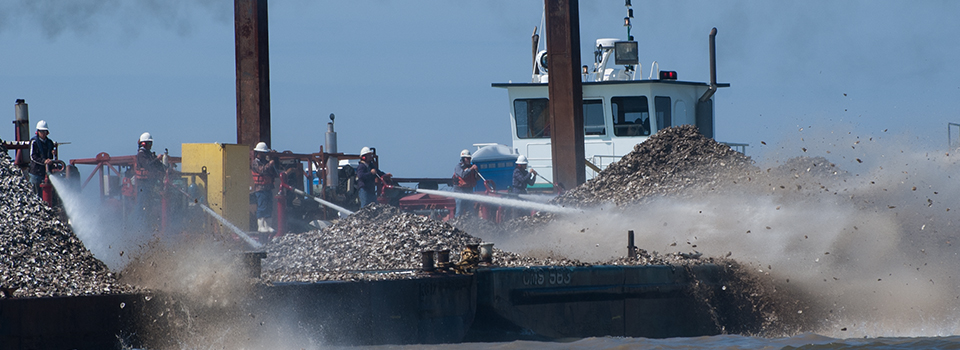NRDA Overview
A Natural Resource Damage Assessment (NRDA) is the process used by natural resource trustees to develop the public’s claim for natural resource damages against the party or parties responsible for a spill and to seek compensation for the harm done to natural resources and services provided by those resources. The goal of a NRDA is restoration of the injured or lost resources. Natural resource trustees are persons and agencies entrusted under the Oil Pollution Act (OPA) and other applicable statutes and regulations to restore injured natural resources and lost services resulting from an incident involving a discharge or substantial threat of a discharge of oil.

Credit: NOAA
History
The Oil Pollution Act of 1990 was enacted to ensure that the environment and the public would be made whole for injury from or loss of natural resources and services as a result of a discharge or substantial threat of a discharge of oil. This goal is achieved through returning injured natural resources and services to the condition they would have been in if the incident had not occurred, and compensating for interim losses from the date of the incident until recovery of such natural resources and services through the restoration, rehabilitation, replacement, or acquisition of equivalent natural resources and/or services. The U.S. Department of Commerce, acting through the National Oceanic and Atmospheric Administration (NOAA), issued final regulations providing an approach that public officials (trustees) should use when conducting Natural Resource Damage Assessments under OPA. These NRDA regulations (the OPA regulations) describe a process by which trustees may:
- Identify injuries to natural resources and services resulting from an incident;
- Provide for the return of injured natural resources and services to baseline conditions and compensation for interim lost services;
- And encourage and facilitate public involvement in the restoration process.
If a trustee conducts the NRDA in accordance with the OPA regulations, the assessment is presumed to be correct unless the potentially responsible party can prove otherwise through a preponderance of evidence.
Steps to NRDA
1. Pre-Assessment: Trustees determine whether injury to natural resources has occurred or is likely to occur. Work includes collecting time-sensitive data, reviewing scientific literature about the oil and its impact on coastal resources, and determining the extent and severity of injury.

Credit: NOAA
2. Injury Assessment and Restoration Planning: Scientific and economic studies assess and quantify the injuries and the loss of services. Trustees determine the need for and the amount of restoration. A restoration plan or series restoration to speed the recovery of the injured resources, such as reconstructing physical habitat that was destroyed or taking measures to protect the population of an endangered species. Restoration planting of plans are developed to identify restoration projects to compensate the public.
3. Restoration: Trustees work with the public and responsible parties to select, implement and monitor restoration projects. The responsible parties pay for assessment and Compensatory restoration includes actions conducted by trustees to address the interim loss of natural resources and services that occur from the date of the incident until pre-spill condition recovery is completed. While the resource is impaired, it is unable to provide services on which other parts of the ecosystem and the public rely. Trustees are authorized to ensure that compensatory restoration projects are implemented to compensate the public for these interim losses. Emergency restoration actions are those taken by trustees prior to the completion of the NRDA and restoration planning process to prevent or reduce additional natural resource injuries and avoid potentially irreversible loss of natural resources.
Early Restoration

On April 21, 2011, the Deepwater Horizon NRDA Trustee Council announced an agreement under which BP committed to provide $1 billion toward implementation of early restoration projects. This agreement is the largest of its kind ever reached.
These funds are divided among the trustees:
- $500 million split equally among the Gulf state trustees (Louisiana, Mississippi,Alabama, Florida and Texas)
- $200 million split equally between the federal trustees (National Oceanic and Atmospheric Administration and the U.S. Department of the Interior)
- $300 million to fund additional state-proposed restoration projects to be selected by federal trustees
- The April 2011 early restoration agreement states that the trustees shall select projects for early restoration that meet all of the following criteria:
- Contribute to making the environment and the public whole by restoring, rehabilitating, replacing or acquiring the equivalent of natural resources or services injured as a result of the Deepwater Horizon oil spill or response, or compensating for interim losses resulting from the incident;
- Address one or more specific injuries to natural resources or services associated with the incident;
- Seek to restore natural resources, habitats or natural resource services of the same type, quality and of comparable ecological and/or human-use value to compensate for identified resource and service losses resulting from the incident;
- Are not inconsistent with the anticipated long-term restoration needs and anticipated final restoration plan; and
- Are feasible and cost-effective.

